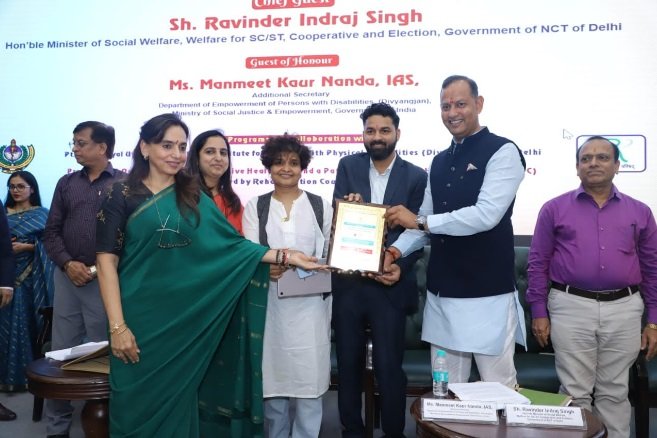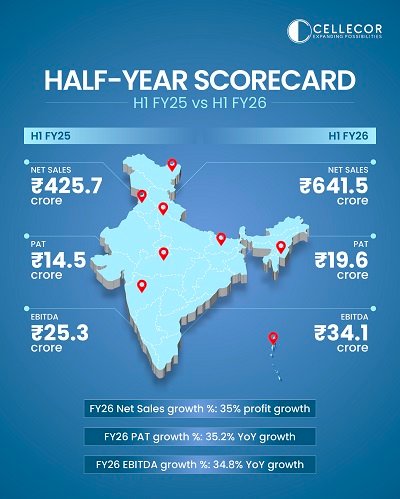A musical titan bowed out too early. For six decades he mesmerised the world with his rhythms and melodies, defying close-minded orthodoxy of traditions, breaking musical barriers, creating new genres, and trying to heal a fractured world the way only a supreme musician can. And what is particularly tragic is that at 73, he was at the height of his powers, his skills undiminished, his vision exploring new musical frontiers, and he had so much more music and wisdom still left to share with the world. Zakir Hussain was not only synonymous with the tabla but also with world music and Hindustani classical music. He was a socio-cultural icon, whose untimely death on December 15 marked the end of an era of several genres of music.
Zakir’s genius transformed the tabla from an integral accompanying instrument to a serious solo tool of self-expression. In fact, by expanding the scope of the tabla, and adding to the musical vocabulary of the instrument, he redefined the very nature of the instrument and its role in the Eastern classical tradition. Like a magician, he could transform the tabla to sound like anything he wanted to: like anything required to sound—a conch, a horse, an engine, a mountain stream. He could make the instrument sing, laugh, roar; and though he enjoyed a banter with the audience onstage, he need never have uttered a word.
His playing connected with an audience in a manner that was at once primal and ineffably sophisticated. His spontaneous joy in performance, shaking his long curls in delight at the music being played, the artistry in the movement of his fingers, and his occasional chat with the audience made his concerts as much a visual pleasure as an auditory treat. “The king in whose hands rhythm became magic, has left us,” said the great guitar player John McLaughlin, with whom Zakir had formed the iconic fusion group Shakti.
Born to music
Born on March 9, 1951, in many ways, Zakir’s destiny was decided for him from the time of his birth. Son of the legendary tabla player Allarakha (1919-2000), who was internationally famous for his partnership with the sitar maestro Ravi Shankar, Zakir grew up with the music of some of the greatest exponents of Indian classical music. The story goes that when Allarakha held the newborn Zakir in his arms for the first time, instead of whispering a prayer into the baby’s ear as tradition demanded, he recited rhythms. Those were the great musician’s prayers that he wanted his son to be blessed by.
Also Read | Zakir Hussain, cultural icon and tabla maestro, leaves behind six decades of boundary-breaking music
Though Allarakha taught him, he made sure that his son was not his musical clone but had his own style, his own voice, and his own way of expressing himself. He once heard his father tell an admirer, “I pray that he (Zakir) will play better than me, do something new and different, and take his music forward.” The words made a deep impact on the young musician, who then spent his whole life doing exactly what his father wanted him to do—be his own musician. Allarakha’s prayers came true: while he remains one of the greatest exponents of the tabla, his son did do something that took his legacy forward, but in a manner that was entirely his own. While it is a futile exercise to ascertain who “played better”—Allarakha or Zakir? It is an undeniable fact that Zakir’s fame was far greater than that of his father, cutting across genres, traditions, and generations. As he once put it: he was always trying to re-invent himself and come up with new ways of saying the same stories of old that he heard from his father.
If Allarakha, along with his two great contemporaries, Samta Prasad (1921-1994) and Kishen Maharaj (1923-2008), had changed the way the tabla was perceived in Indian classical music and had raised the stature of the tabla player to that of a collaborator rather than just an accompanist, Zakir took the tabla even further and established that the tabla could be the main draw in a performance. As the flautist Rakesh Chaurasia put it, “We generally say that tabla starts from “A” for Allarakha and ends at “Z” for Zakir Hussain. I think everybody in the music fraternity calls him the god of tabla.”
While Zakir was taught in the traditional Hindustani classical way, Allarakha never imposed the rigidity that often restricts musicians to specific gharanas. Allarakha himself composed for films and saw nothing wrong in a musician expressing herself in different formats. In fact, six years before Shakti came into being, Allarakha tried his hand at jazz fusion, collaborating with the great jazz drummer Buddy Rich in the 1968 album Rich a la Rakha. The album, which had Ravi Shankar as conductor, had Nobu Mullick on Tanpura and Paul Horn on flute. Always encouraging his son to expose himself to different kinds of music, Allarakha would often bring back his foreign tours albums by the Grateful Dead, the Doors and other rock groups.
Tabla maestro Ustad Zakir Hussain performs with sitar maestro Pandit Ravi Shankar in New Delhi in February, 1995. Hussain’s father, Allarakha, was internationally famous for his collaborations with Ravi Shankar.
| Photo Credit:
PTI
But there was no compromise as far as the discipline of learning was concerned. The child Zakir’s day would begin at 3 am when he and his father would recite the tabla bols (the rhythmic syllables), and he would learn about various compositions. In fact, the only time the gentle Allarakha had slapped his son was when, instead of practising, little Zakir was playing cricket. Talking about the incident much later in his life, Zakir said his father’s main concern was that he might have injured his fingers, which would hamper his playing the tabla. The hours of practice and dedication secured for him his unparalleled technique—on one occasion a music critic likened the speed of his fingers to the beat of a hummingbird’s wings.
But his real lessons came from watching the great masters perform on stage with his father and learning the nuances of music from the closest possible quarters from a very early age. Later in life (not much later, given that he started playing professionally while still a child), when it was his turn to play with the greats, those experiences stood him in good stead. “When I accompanied Pandit Ravi Shankarji… all those recordings and concerts were in my head. I could close my eyes and see Raviji and my father looking at each other during a performance, smiling, nodding,” he later said in an interview. While still in his teens, Zakir cut his teeth playing with musicians and exponents of North Indian classical music of the highest calibre. Before long, from a child prodigy, he became one of the most sought-after tabla players.
Expanding his horizon
It was a call from Ravi Shankar to come and play with him in the US that came as a turning point in young Zakir’s life. He was just 19 and playing in Munich, when ill health forced Allarakha to discontinue his tour with Ravi Shankar, and the sitar maestro then called Zakir to take his father’s place. After accompanying Ravi Shankar in several shows, including the famous February 1970 Fillmore East concert, young Zakir took on a teaching job in the Department of Ethnomusicology at the University of Washington in Seattle. Before long, the legendary sarod player Ali Akbar Khan, who lived in the Bay Area, invited Zakir to play tabla with him and also teach in his music academy in San Rafael.
It was at Ali Akbar Khan’s flat that an impromptu jam with Zakir on tabla and the great John Mclaughlin on an acoustic guitar, set the ball rolling for the establishment of one of the most influential and iconic music groups of all time—Shakti. Recalling that jam session, McLaughlin said, “After 30 seconds of playing, I knew I had to work and play with this guy… From the first second it was total communication.”
With McLaughlin on guitar, Zakir on tabla, L Shankar on violin, and T H “Vikku” Vinayakram on ghatam, Shakti was an international sensation right from the start. Four masters of their respective instruments had come together to create a sound never before heard—a genre-shattering, tradition-defying, unrestrained improvisational music, that rejected classifications and strove constantly at musical liberty. By the mid-1970s, Shakti was one of the biggest acts in international music, creating a new genre that came to be known as world music.
“There we were—four musicians from varied backgrounds sitting on a stage platform in Indian style, and with complete conviction, playing music that was never heard before… We were confident that our musical statement would become valid and accepted as a road to traverse and that would eventually lead to what is now known as world music,” Zakir had said. Even if some of the classical music purists baulked at this new amalgamation of traditions, Zakir, for all his classical grounding, was joyously committing “musical sacrilege” in his quest for a path “towards oneness”, as he later put it. In the five short years of its existence, Shakti produced only three albums—“Shakti” with John McLaughlin (1976), A Handful of Beauty (1976), and Natural Elements (1977)—but had introduced one of the most important new chapters in the history of modern music. And Zakir had become a global superstar.

Throughout his career, Hussain was the recipient of several honours and accolades for independent and joint projects. Shakti’s new album This Moment (released in June 2023), won the Grammy Award for Best Global Music Album in 2024.
| Photo Credit:
Reuters
Fifty years after Shakti’s formation, Zakir reunited with McLaughlin to re-form Shakti with the great Kanjira player V Selvaganesh, the son of T H Vikku Vinayakram, violinist Ganesh Rajagopalan, and vocalist Shankar Mahadevan. Their new album, This Moment (released in June 2023), won the Grammy Award for Best Global Music Album in 2024.
The great craft
Zakir’s genius lay in his great adaptability to different genres of music and different categories of Hindustani classical. Though a virtuoso player, he would never project himself at the cost of the overall idea of the composition. He would blend in rather than stand out; make his playing integrally inherent to a sound; even use the tabla like another percussive instrument if needed. “I can play it like a bongo drum, like congas, in any possible way that is required in that composition of people playing for it to mix in, without standing out,” he had said. For all his stardom and his unworldly skills, he never stopped working on his great craft. Before playing with different musicians, he would first acquaint himself with their style, sound, and musical vision. To him, playing music together was like having a conversation. “And a proper conversation can only happen if you know each other well,” he had pointed out.
He approached each musician he was collaborating with according to their style, and each instrument his partner was playing according to its nature and scope. It is this dedication towards his craft that accounted for his versatility and allowed for some of the greatest and most influential collaborations in the history of Indian classical and world music. In Indian classical music, he was equally adept at playing with sitar geniuses like Ravi Shankar, Nikhil Banerjee, and Vilayat Khan as he was while accompanying sarod legends like Ali Akbar Khan and Amjad Ali Khan. He played with some of the greatest singers, like Bhimsen Joshi, Shobha Gurtu, Pandit Jasraj, Ghulam Mustafa Khan, Nirmala Devi, and others. At the same time, he had a four-decade-long association with the legendary Kathak dancers Sitara Devi and Birju Maharaj. He collaborated extensively with the great santoor maestro Shiv Kumar Sharma and played alongside the legendary flautist Hari Prasad Chaurasia. For each of them, he used the tabla differently, as per the requirement of the instrument playing alongside him.
He was one of the rare musical phenomena who had a profound impact on both Eastern and Western music. Apart from his groundbreaking work with Shakti, he collaborated with rock legends like George Harrison, Van Morrison, Earth, Wind & Fire, and Mickey Hart (Grateful Dead’s drummer). He played with eminent jazz musicians like the guitarist Pat Martino, tenor saxophone players Pharaoh Sanders and Charles Lloyd, and drummer Eric Harland; and also partnered the great classical cellist, Yo-Yo Ma.
His genius was not contained only to making albums and live performances. He made music for several movies both in India and abroad, including iconic films like Bernardo Bertolucci’s Little Buddha, Ismail Merchant’s In Custody, Francis Ford Coppola’s Apocalypse Now, Sai Paranjpye’s Saaz and others. He even tried his hand at acting—Saaz and Merchant Ivory’s production Heat and Dust.
Also Read | Can Carnatic music concerts stand alone without the violin?
His album with Mickey Hart, Plane Drum (1992), won him the first of his five Grammy awards. His collaboration with Hart won him his second Grammy in 2009 for the album Golden Drum Project. In February this year, he won three more Grammys—two for his work with US banjo player Bela Fleck, and one for the Shakti album This Moment. His numerous honours and awards in India and abroad include the Padma Shri, the Padma Bhushan, the Padma Vibhushan, the Sangeet Natak Academy Award, the Kalidas Samman, the Kyoto Prize—Japan’s highest civilian award, the National Heritage Fellowship from the United States, and many others. It would be remiss to not mention that he was also voted the Sexiest Man by women readers of Gentleman in 1994. And the iconic Wah Taj advertisement for tea had made him a TV sensation.
But for all the accolades he had received and the enormous prestige that his name carried, he never lost his humility, nor his reverence for not just senior maestros, but all musicians. He, in fact, had decided never to play in any private weddings or parties after he had seen Bismillah Khan and Vilayat Khan playing on the lawn of a wedding reception in Kolkata, to an indifferent crowd, who remained completely oblivious to the fact that they were in the presence of greatness.
For Zakir, music was not just a skill or a path to fame and fortune. It was a religion of sorts, by which he strove to change the world by breaking down barriers of prejudice and orthodoxy. In an interview with Nasreen Munni Kabir, which was published in a book titled Zakir Hussain: A Life in Music, he was asked whether he was a religious person or not, to which he answered: “What is a religious person? I am a Muslim; my wife Toni is a Catholic; my daughters, Anisa and Isabella, were baptised; Taufiq’s (his brother) wife, Geetika Verde, is a Konkan Maharashtrian; Fazal’s (his other brother) wife, Birwa, is a Gujarati from Ahmedabad—our family is a beautiful mix of universal oneness. The fewer fences there are to climb, the better. I believe in the universality of humanity and that we are all one.”
This perhaps sums up the life and works of the one of the greatest musicians of the world.



